You may be surprised to learn that the Holy Land—as a geographic term describing sites associated with the Bible and Jesus—encompasses not one, but five countries: modern day Lebanon, Jordan, Israel, the Palestinian Territories, and southwestern Syria.
The country of Jordan, in particular, is a rich and impressive mosaic of important biblical sites associated with both the Old and New Testament. It was in Jordan that Jacob wrestled with the Angel of God (Genesis), where Job suffered (Book of Job), where Lot lived in a cave (Genesis), and where Elijah ascended to heaven (2 Kings). Jordan is the birthplace of Ruth (Book of Ruth), where Moses led the Israelites on their escape from Egypt and where, finally, Moses viewed the Promised Land (Deuteronomy) and died. And it is here that John baptized Jesus in the River Jordan, and where John lived as a hermit with his followers—and, eventually, was killed by Herod Antipas.
Here are only five of the literally hundreds of places in Jordan referenced in the Bible:
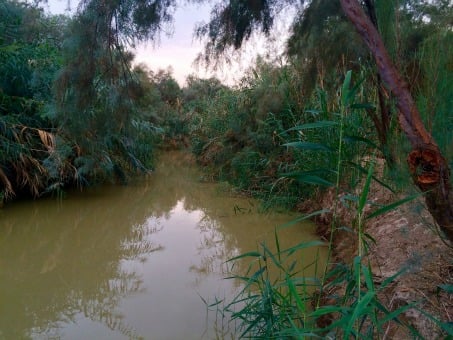
Bethany Beyond the Jordan
A personal visit by each of our last three Popes validates Bethany Beyond the Jordan as the place where John baptized Jesus—as much as the archaeological excavations that have taken place there over the past two decades. Located opposite Jericho on the east bank of a large loop of the River Jordan, the site is flanked by the nearby remains of a 2nd century church built adjacent to caves where John the Baptist and his followers lived and carried out his mission.
Although the Jordan River serves as the border between the countries of Israel and Jordan, the Jordan here is maybe 20 feet wide, more a creek than a river. But its dimensions—as well as the preservation of its natural habitat, make Bethany Beyond the Jordan a solemn site, genuinely mystical. Experts have restored and preserved the site while taking great care to maintain its native state. It is not difficult to image Jesus meeting John here on the banks of the Jordan River.
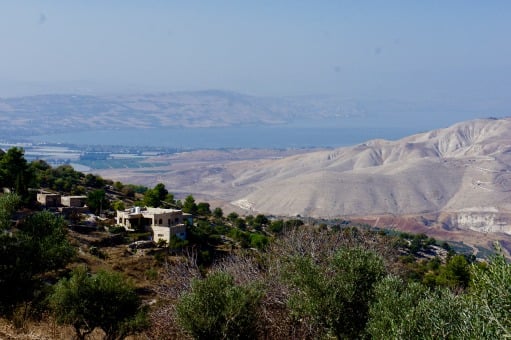
Umm Qais
Jordan is home to some of the world’s oldest churches, such as the 2nd century remains at Bethany Beyond the Jordan—and the rare five-aisled 4th century basilica built over a Roman-Byzantine tomb at Umm Qais. Part of the old Decapolis city of Gadara (modern-day Umm Qais), the church commemorated the site of one of Jesus’ most dramatic miracles, the expulsion of a legion of demons out of a man and into nearby swine (Luke 8: 27-33).
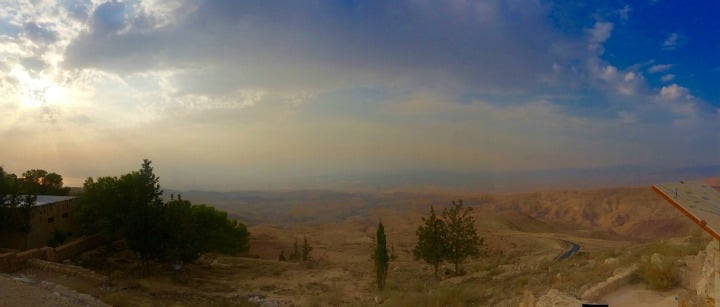
Mount Nebo
After 40 years leading the Israelites through the desert, God led Moses to the windswept summit of Mount Nebo and showed him the Promised Land that he would never enter. Although Moses died here and was buried nearby, his grave remains unknown.
A group of Franciscan priests is currently overseeing the restoration of the 4th century basilica built atop the mountain. Outside the sanctuary, the Brazen Serpent Monument merges the bronze serpent of healing that God commanded Moses to erect (Numbers 21:4-9) and the cross of Christ. Saint Pope John Paul II and Pope Benedict XVI both stood on top of Mount Nebo next to the Serpentine Cross and looked out towards the Promised Land.
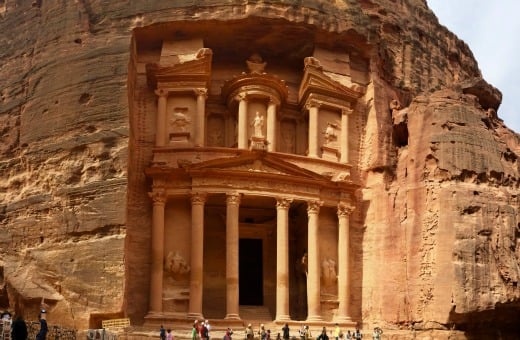
Petra
Popularly known for “The Treasury,” the rock-carved imposing facade featured in the dramatic climax of “Indiana Jones and the Last Crusade,” the rose-red city of Petra is so much more than that one building—no matter how impressive. Petra is one of the Seven Wonders of the World and a UNESCO World Heritage Site. Archeologists believe that 85% of the city remains underground and untouched. Although Petra was unknown to the Western world for centuries, at its prime, it was a city of 100,000 inhabitants. Scholars know the Nabataeans lived here since at least 312 B.C., but many speculate the city dates much earlier than that. In modern time, members of the Bedouin tribes inhabited its caves until the 1980s.
Petra was a thriving trading center at the intersection of two major travel routes at the time of Jesus, making historians speculate that it would have been a stop for the “wise men” who traveled to Bethlehem to honor the infant Jesus. One of the adoring kings mentioned in the Gospel of Matthew was likely Aretas, the Nabataean ruler of Petra who is also noted in 2 Corinthians 11:32. Bishops from Petra attended Church synods and councils from AD 343, indicating that the city was a significant Christian community, with a thriving monastic population. At least three churches have been discovered in Petra, one a basilica dedicated to the Virgin Mary.
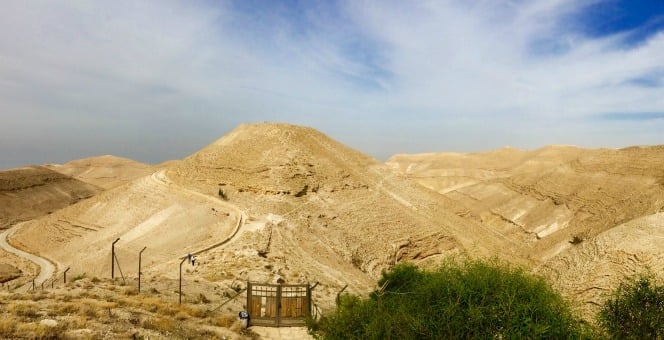
Mukawir
First century Roman-Jewish historian Josephus identified the breathtaking fortress which overlooks the Dead Sea and the distant hills of Palestine atop Machaerus (modern day Mukawir), as the palace of Herod Antipas. Herod was the Roman ruler who imprisoned and later beheaded John the Baptist as a result of Salome’s fateful dance (Matthew 14:3-11). Mukawir, along with Mount Nebo and Bethany Beyond the Jordan, were designated Holy Land Pilgrimage Sites for the Year 2000 by Saint Pope John Paul II.
Copyright 2016 Maria de Lourdes Ruiz Scaperlanda
All photos courtesy of the author. All rights reserved.
About the Author
María de Lourdes Ruiz Scaperlanda
María Ruiz Scaperlanda writes regularly at DayByDayWithMaria.blogspot.com/. María is an award-winning author, journalist, and retreat facilitator. She has been published broadly in the U.S. Catholic Press, traveling on international assignments in Central America and the Caribbean, Israel, Turkey, Jordan, and throughout Europe. María and Michael reside in Norman, Oklahoma.


.png?width=1806&height=731&name=CatholicMom_hcfm_logo1_pos_871c_2728c%20(002).png)
Comments